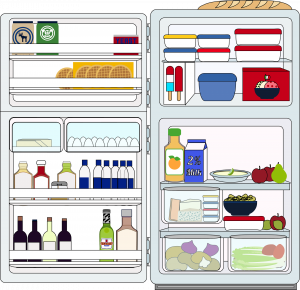
Summer is a hot time for outdoor holidays and weekends. Going to your summer cottage, picnic or beach, river fishing or a trip by car to the blue sea, take with you one of the most useful inventions of mankind – a portable fridge.
Thanks to its ability to keep temperatures low for a long time, we can provide ourselves with fresh food and refreshments on a hot day, whether outdoors or on the road. At the same time, portable fridges may vary greatly in their characteristics and capabilities, which means that you need to know in advance what criteria to follow when choosing the right model.
To help you make the right choice, consider the existing types of portable refrigerators and their distinguishing features in more detail.
Isothermal containers and thermo bags
Such fridges will be perfect for picnic, fishing, rest on the beach, and also will help to keep fresh the lunch taken to work.
Lightweight nylon thermo bags and isothermal plastic containers are equipped with a special isothermal layer, which allows you to keep the cold inside the chamber from a few hours to several days, depending on the model. The containers and bags do not generate cold on their own, but only protect the contents from external temperatures, so products must be placed in them already cooled. And the more of them in the fridge, the longer they can stay cold.
The useful effect of autonomous refrigerators can also be enhanced by using cold batteries, pre-frozen in a regular freezer. The necessary number of these “ice substitutes” is determined by the volume of the fridge itself: one battery weighing 200-300 grams will suffice for 5 liters.
Isothermal containers and thermo bags can have different volumes and shapes – from a small lunch bag with a volume of only 0.5 liters to a 100-liter container, especially beloved by avid fishermen.
The containers and bags are unsuitable for use and can be used in a variety of environmental conditions.

Portable fridges blue
Car refrigerators
Car refrigerators are the best choice for those who like to travel by car. These units are connected to a car cigarette lighter (12 V/24 V) and can also be combined type of power supply and run on mains (220 V) or gas. Powered by external power sources, they are able not only to keep the temperature inside the chamber low, but also independently generate cold, cooling and even freezing food.
According to the cooling method, car refrigerators fall into three main categories: thermoelectric, compressor and absorption refrigerators. Each of them defines important parameters such as volume, temperature range, energy consumption and even operating conditions. Let us look at each category in more detail.
Thermoelectric autofreezers – durable, unpretentious, compact and silent, are the most popular among those who like to travel by car, as well as well tolerate the ride on the bumps and continue to work smoothly even with strong rolls of the car. Their device does not use refrigerants, as in other car refrigerators, and the air inside the chamber is cooled by electricity.
Small in volume (from 0.5 to 50 liters), they can in most cases maintain the temperature from +3 ° C to +10 ° C, sufficient to store pre-cooled food. Some of them can also provide a lower temperature in the chamber (up to -3 ° C). And among thermoelectric car refrigerators there are models equipped with a heating function (up to +70 ° C), which allows you to heat a chilled lunch or keep food and drinks hot if you go on a trip in the cold season.
However, the thermoelectric cooling method has one major drawback, namely the consumption of large amounts of electricity, as well as fairly slow cooling and heating processes.
Compressor car chillers are more similar to their domestic counterparts in their design and operate on safe refrigerants such as freon. These models have the largest capacity (up to 250 l) and, accordingly, the largest size and weight, but they consume little energy and can not only quickly cool but also freeze food (down to -20 ° C). Compressor-type car refrigerators are in particular demand among fans of fishing and hunting, as they can accommodate and qualitatively cool all caught prey. But compressor “auto-freezers”, as they are often called, have a weak point: they can not be subjected to strong shaking or constant vibration load – because of its device they are not designed for use in off-road conditions.
Absorption car chillers are also called electro-gas and gas-electric, since both electricity and gas can provide energy. Such combined type of power supply allows using the refrigerator even in conditions of complete absence of electricity – it is enough to connect it to a gas cylinder. Using gas as an external energy source makes absorption models the most economical.
Electro-gas models are equipped with spacious chambers (from 20 to 140 litres) and, working on the basis of liquid refrigerant – water ammonia solution, as well as compressor models, allow to quickly cool or freeze products. As with other car refrigerators, there is also a weakness in the absorption one – when the rolls from 30° the refrigerant circulation is broken and the refrigerator is switched off.

Portable fridges
More to
When choosing a portable refrigerator, stand-alone or car refrigerator, determine how much of the camera you need. Usually it is calculated from 5 liters per 1 person. Also note that bottles take up quite a lot of space in the fridge, so if in addition to food you plan to take a large stock of chilled drinks, add to the minimum required volume of the chamber extra litre.
Choose the lightest models. To make sure that the fridge is not too heavy for you, calculate the gross weight in advance.
If your choice is an auto-refrigerator, check the temperature range specified in its specifications: the higher the number, the more efficient the cooling will be. For example, if the temperature range is 20 degrees, then in conditions of 25-degree heat in the car interior, the refrigerator will be able to maintain the air temperature in the chamber about +5 ° C.
Check the length of the mains cable – it should be not less than 2 meters to allow you to place the car refrigerator anywhere in the interior. If necessary, you can also use a special extension cord if, for example, you plan to transport the refrigerator in the boot.
If necessary, you can also always purchase a mains adapter for connecting the car fridge to the 220 V household power supply, which is not always present in the set, in case you plan to use the car fridge also stationary.
For the safety of both products and passengers, ask also about the possibility of fixing the fridge in the passenger compartment – while driving, it must stand firmly in place and not tip over during heavy braking or turning. If you wish, you can also choose the built-in model, but the portable fridge can always be taken from the car along with the contents.
Please also note the location of the fridge cover. The cover placed at the top of the structure better retains the cold and protects the contents more reliably in conditions of strong shaking.
It increases the comfort of use of the fridge and the special protective device that is present in some models: it provides control of the level of charge of the car battery, not allowing its full discharge.
